A milestone in El Salvador
Julie and I have camped in some amazing places over the years, stark deserts, sandy beaches, high mountain tops and much more but lately we’ve been hanging out in secure car parks of hotels and restaurants, a marina and a hostel. Whatever works is what we say. But our first night in El Salvador was a new experience. After a painful two-hour border-crossing process to get our import permit for Tramp we had run out of light and were desperate to find a safe spot to camp. Up came a bright shiny Texaco service station and after getting permission from the staff we set up camp in the corner. And the kicker was that even though the station closed at night their armed guard was on duty all night! Perfecto!
El Salvador has one of the grimmest histories of any country in Central America and is often bypassed by overlanders. The Spanish exploited the indigenous people after their arrival in 1524 and even after independence in the 19th century the people did not completely escape the hard-line governments and military that dominated the country. An uprising in 1932 saw up to 30,000 people killed and the bloody civil war that spanned the 1980’s and 1990’s saw up to 75,000 people killed and many more displaced. El Salvador was doing it tough.
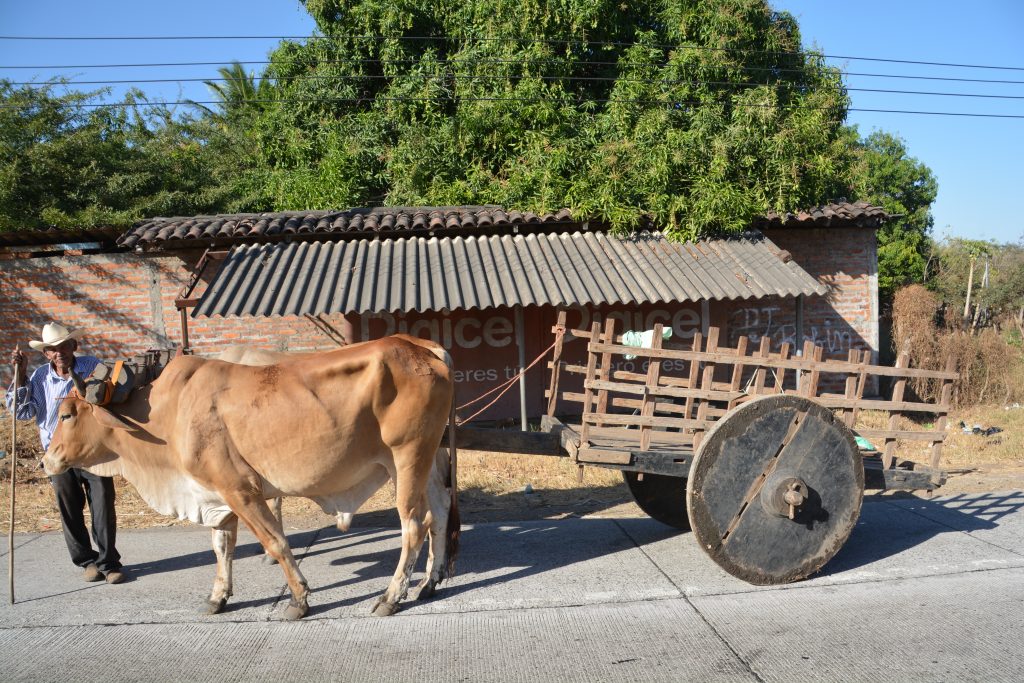
Unbelievably, a cart with solid wooden wheels being pulled by two cows. This is not Bonanza, its El Salvador!
The scars of the civil war are still felt in the lives of people today. Recent governments are making slow progress in reforming the economy and society in general but gang warfare and lawlessness still claw at the country. Tourism is at the ground floor but creeping upward, despite the country’s nasty reputation, largely because it is a rough diamond for those willing to mine it.
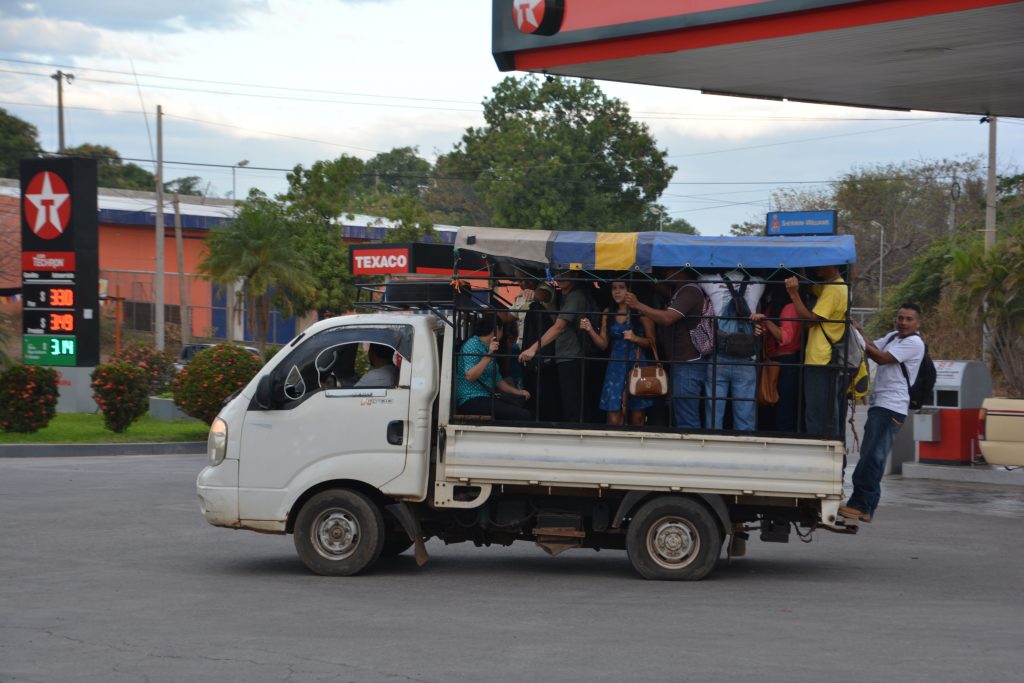
Public transport in the small towns of El Salvador take on a unique look, including this truck with a flat rear tire on the other side
Today El Salvador’s marketing material, if there was any, would focus on three words: volcanos, coffee and surfing. El Salvador is covered in dramatic volcanos, some still active, and on the lower slopes of these handsome mountains are grown some of the best coffee beans in the world. Coffee is by far El Salvador’s largest export and accounts for a major share of their economy (money sent home from Salvadorans living in the US accounts for a staggering 20% of the economy). The country also boasts some of the best waves for surfing in the Americas and with our limited time we decided to focus on checking them out.
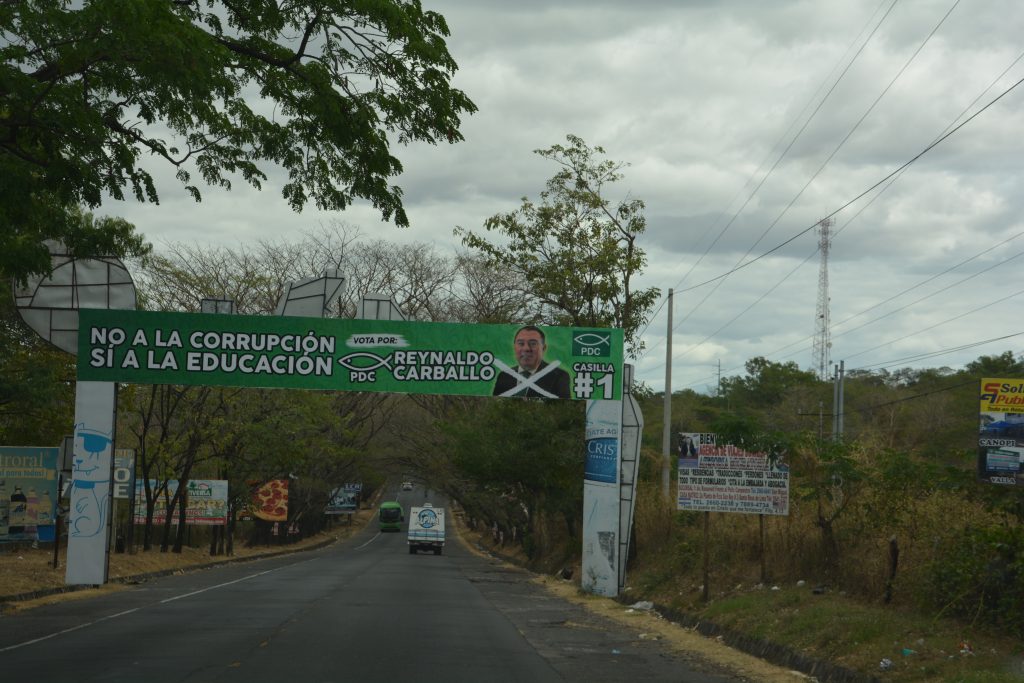
No to corruption, yes to education, that sounds pretty good. El Salvador was plastered in election campaign material, including huge signs over the roads. We couldn’t decide who we would vote for but it’s clearly a hot topic!
Curiously, El Salvador adopted the US dollar as its official currency back in 2000 so everything is in dollars, including the ATMs, and they extensively use the US one dollar coin, even though it is exceptionally rare in the US. In any case, it was great to order an ice-cold beer in a local bar and only pay one dollar. The way life should be.
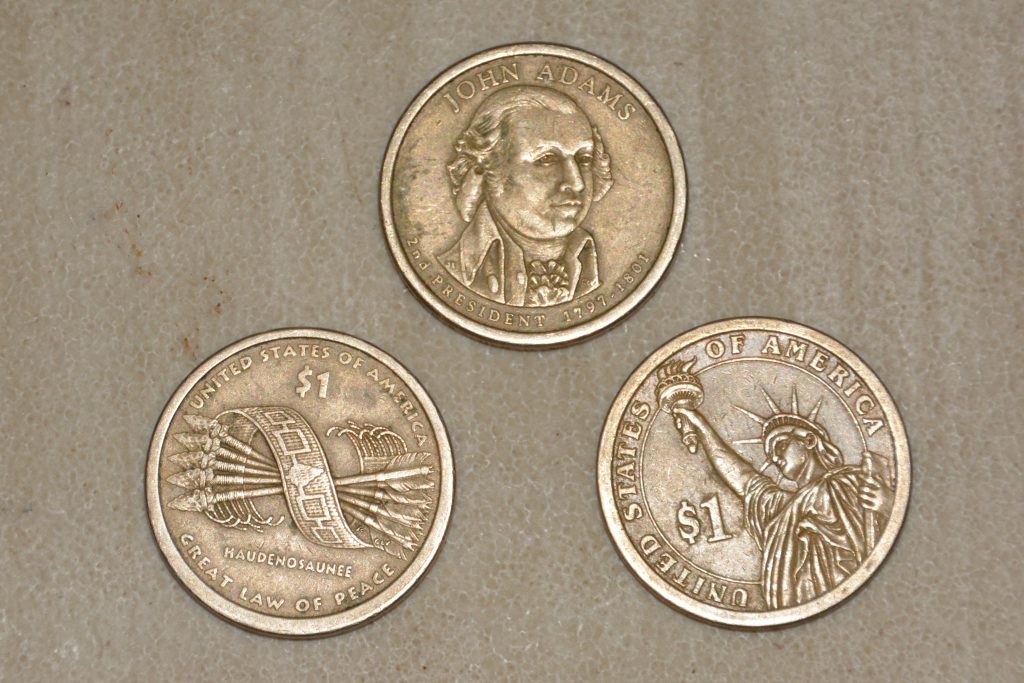
Dad would have loved these…US dollar coins play a very major role in El Salvador’s economy even though they are almost unheard of in the US these days
It was another hot day, very hot, temperatures hovering in the mid 90’sF/mid 30’sC and the air-con was in overdrive. Never mind, the drive along the coastline was very special – a high winding road providing glimpses of the black sandy beaches at the base of the cliffs far below. There was often a dirt road leading down to the beaches where small villages live on fishing and tourists keen for a unique experience – surfing in El Salvador.
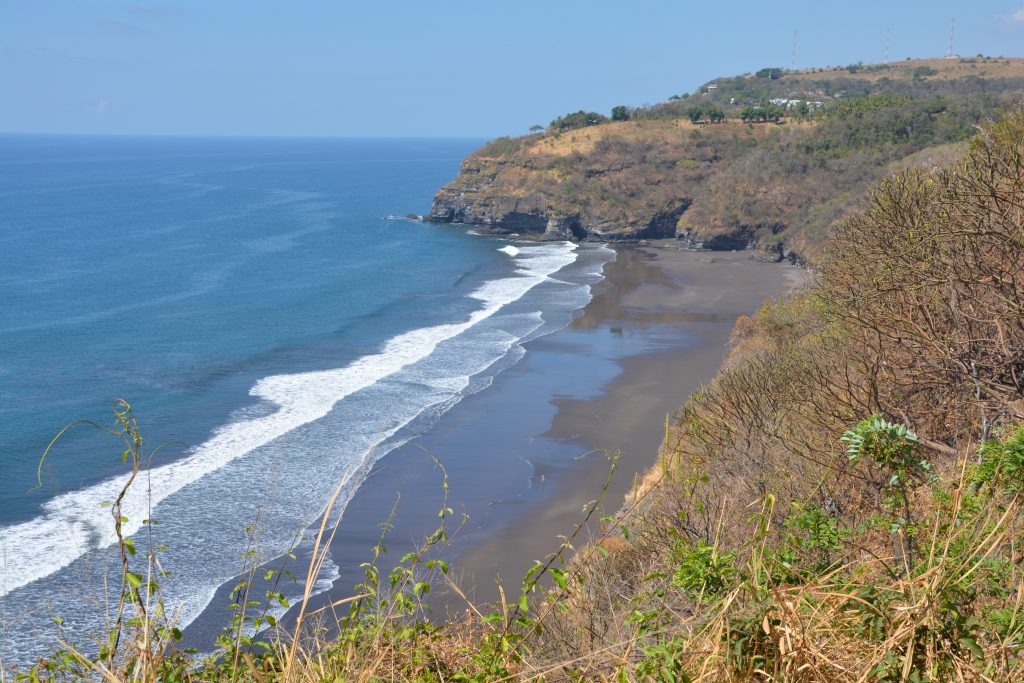
Paradise – long black sandy beaches grace the El Salvador coastline and are a mecca for adventurous surfers
We visited five of these villages and their beaches, each with their soft black sand and each with minimal dormitory-type accommodation for young people who want to surf, drink and swing in a hammock. The coastal scenes were beautiful, the surf looked okay in a few spots, the villages a little gritty and the ‘beaches’ were sometimes just stony rather than sandy. Okay, we get it, this is El Salvador and its cool to be different but hey guys, if you really want to surf come to Australia!
We ended the day in a small coastal fishing town called Puerto El Triunfo and camped down near the water opposite the military buildings with their permission (and protection). We walked out on the pier to enjoy the slightly cooler late afternoon air, had a beer in a restaurant and took in the very local scene.
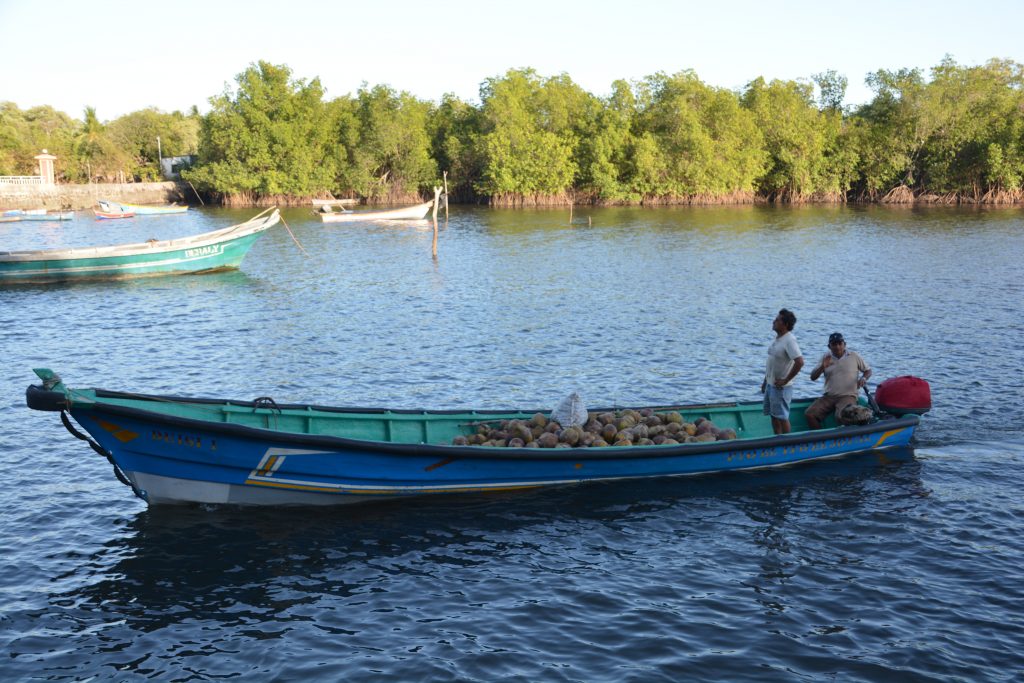
We watched coconuts come in by boat, unloaded by hand onto the pier and then loaded by hand into the back of a large truck
One interesting feature of El Salvador, and it was the same in Guatemala, is the use of armed guards. Most businesses, from petrol stations to fast food outlets, clothing stores and all the rest hire an armed guard, usually with a shortened shot gun and shoulder strap, to protect their business. Local police are no match for society’s criminal element so businesses have to protect themselves. It’s a bit strange at first but eventually you get used to it (sort of…).

Guatemala and El Salvador was overflowing with these Automotels which are basically a place to bring your loved one – illicit or not – and be able to park off the street in a closed garage so no one can see you. Some even advertise the price on the front, such as $5 for 3 hours.
Having had a taste for the coast and beaches of El Salvador the next day we decided to head inland and explore the volcanos. As it happens, there are remote villages on the upper slopes of the imposing Tecapo volcano and the steep winding road took us through extensive coffee plantations mixed in with thick jungle.
We climbed up to the top rim of the volcano and dropped down into the caldera which was partly filled with this little emerald green lake called Laguna de Alegria which had a slight sulphur smell. This lake has been dubbed ‘the Emerald of America’ which sounds good but doesn’t say much for the other emeralds in America. Nevertheless, we let Tramp rest after his vigorous climb up the slopes and explored this lake before heading back down.
We had lunch in the medium-sized town of San Miguel with its bustling plaza and impressive church before heading back to the coast and the major port town of La Union. We camped that night in a secure car park (with an armed guard there around the clock) at a restaurant on the water’s edge and enjoyed some much needed cooling ocean breezes.
Julie and I also raised our glasses to a special occasion – today marked the end of our first year on the road – an amazing anniversary. We left Australia exactly one year ago for our big adventure – Follow the Sun – and have had a fabulous experience, travelling all over North America and now Central America, so many extraordinary moments we get dizzy thinking about it. But the adventure continues as we enter our second year and continue our drive south. Wonders await, that’s for sure.
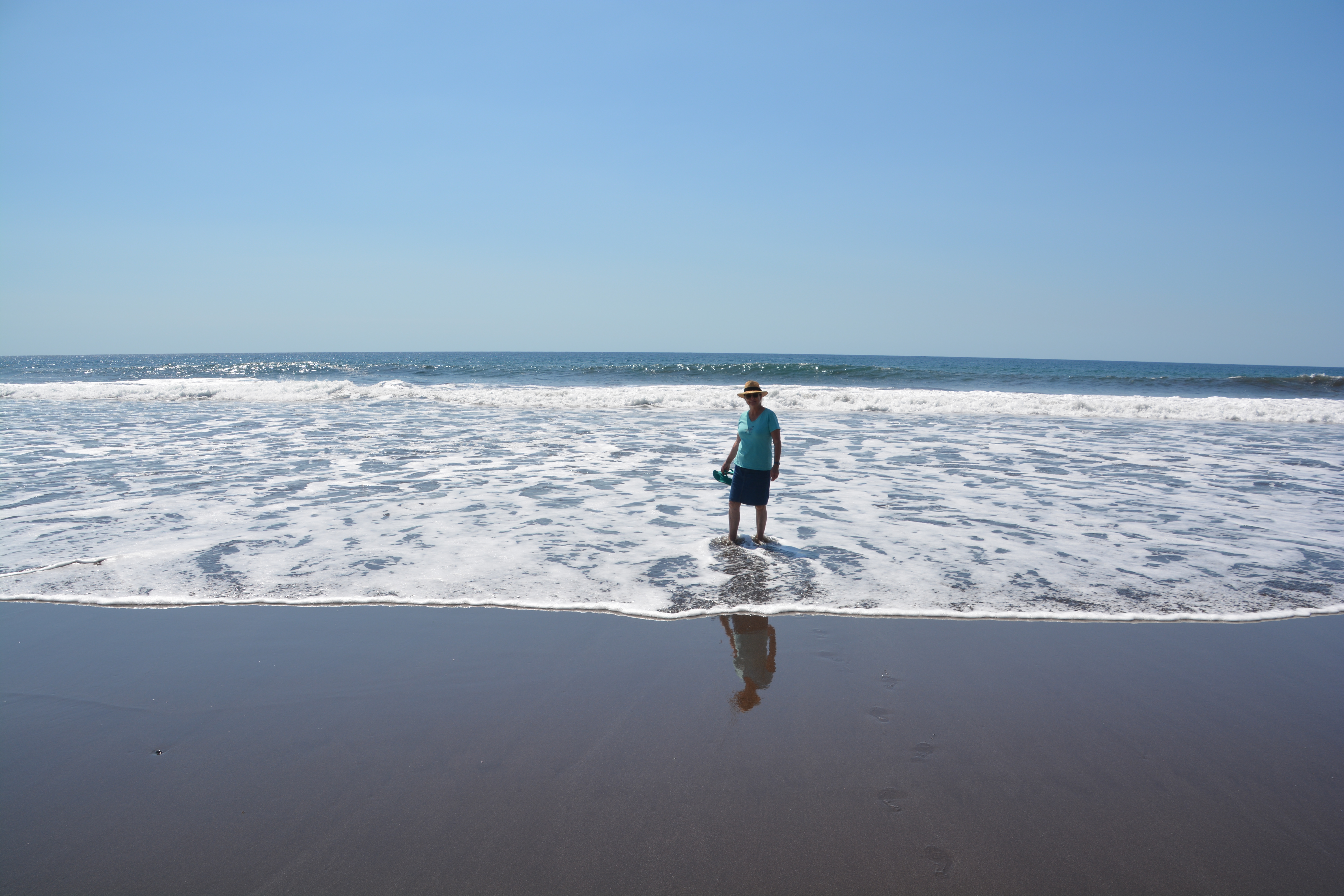







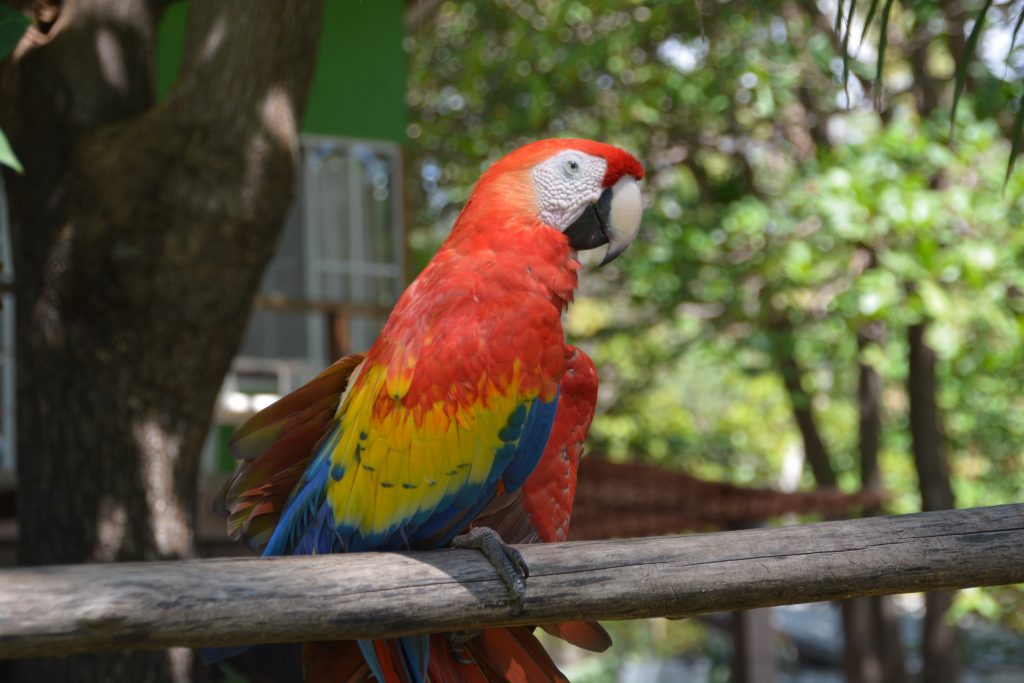







Comments
A milestone in El Salvador — No Comments
HTML tags allowed in your comment: <a href="" title=""> <abbr title=""> <acronym title=""> <b> <blockquote cite=""> <cite> <code> <del datetime=""> <em> <i> <q cite=""> <s> <strike> <strong>